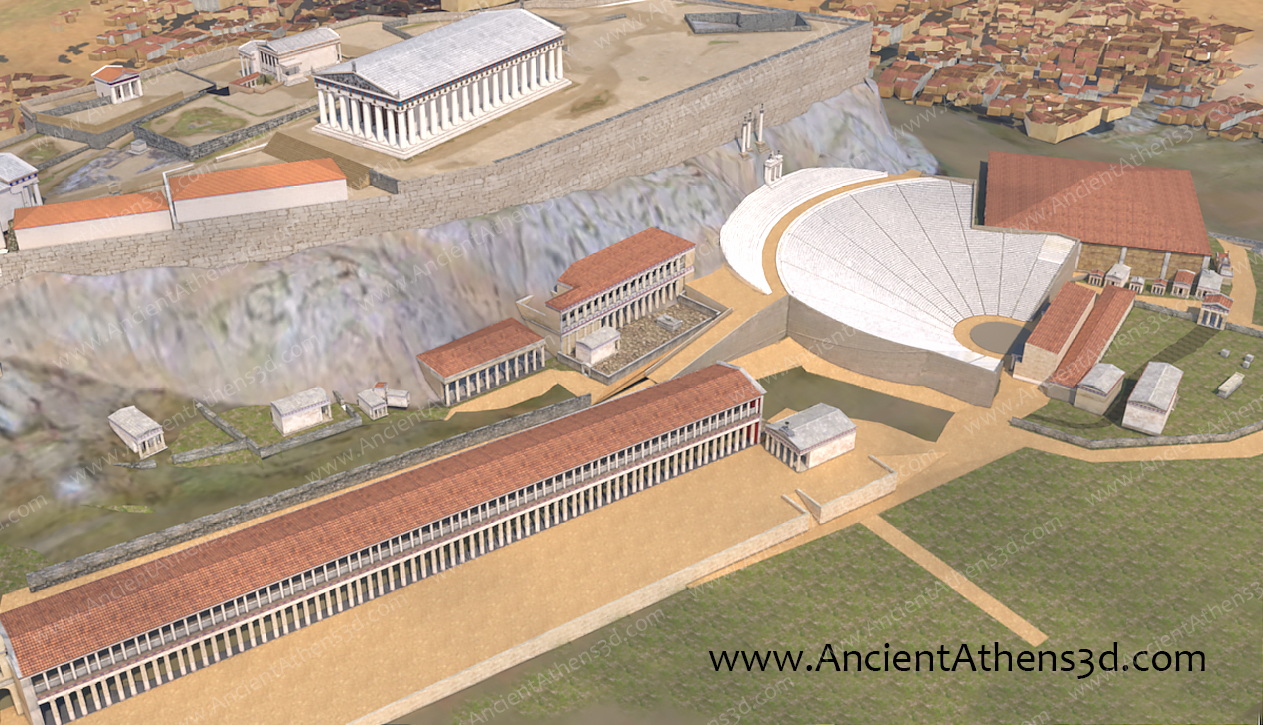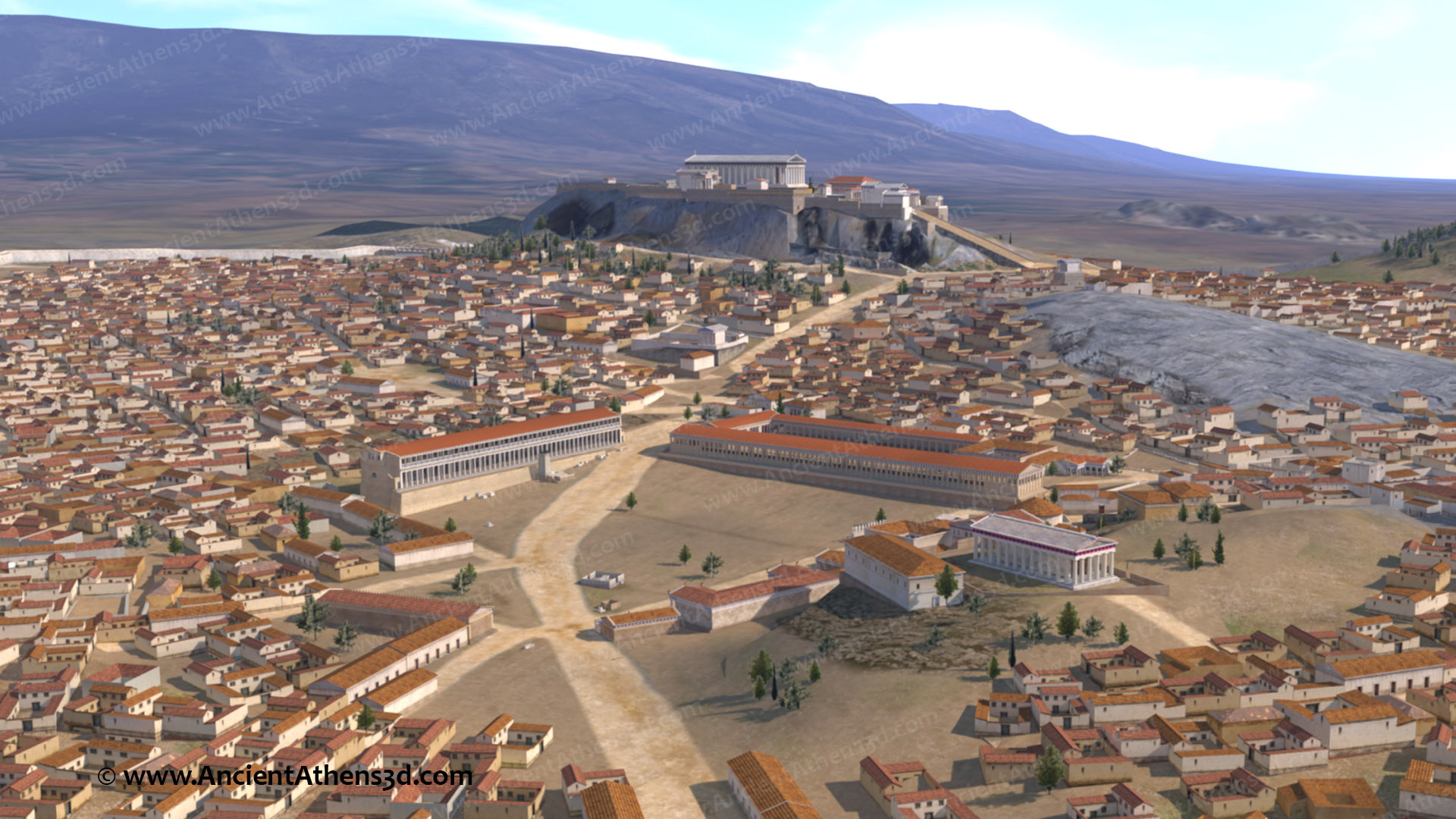Hellenistic Agora (323-86 BC)
The Agora of Athens has always been the heart of the city that served almost all of its functions. For this reason there were frequent changes of its design and construction of new buildings, depending on the needs of each era. The 4th century BC was a transitional stage towards the final formation of the Hellenistic form of the Agora, based on the standards of the time.
The Agora in the 4th and 3rd century BC
At the beginning of the Hellenistic era some small buildings were constructed as Athens struggled to reach its former glory. For the first time after the destruction of the city by the Persians in 480 BC, the temple of Patroos Apollo was rebuilt. A big square peristyle building was constructed in the east side on the spot of the previous open-air courthouse. Also, the Athenians built a new fountain house west of the Aiakeion and the monument of the Eponymous Heroes was transferred in front of the Bouleuterion.
The Agora of Athens in the 2nd century BC
During the 2nd century BC the Agora was significantly transformed with the addition of new big Stoas which dominated the place. These stoas were all donations of Hellenistic Kings and decisively changed the plan of the site to look more like the agoras of the newest cities of the Hellenistic kingdoms.
The Stoa of Attalos (159-138 BC)
The Stoa of Attalos was a donation by the King of Pergamon, Attalos II (159 – 138 BC) as an inscription on the entablature proves. It was two-storied, of Doric order, and was 120 metres long with 45 columns in the western side. In the Eastern one, it had 21 rooms that were used as shops. In noth and south ends staircases led to the second floor.
The Stoa was destroyed by the Heruli in 267 AD and became a part of the postherulian wall of Athens. The remaining structural materials were used for the construction of the two medieval towers in the Propylaia of Acropolis. The Stoa was completely restored between 1953-1956 by the American School of Classical Studies in order to accomodate the Museum of Ancient Agora.South Stoas
Middle Stoa (c.180 BC)
The Middle Stoa was constructed in around 180 BC. It could be possible that it was a gift to the city by the king of Pontus Pharnaces I. It was the biggest building of the Agora, measuring 147 metres long and 17.5 m. wide. It had 160 Doric columns all around and was separated in the interior by 23 Ionic columns. It was completely destroyed by fire during the raid of Heruli in 267 AD. South Stoa II (c.150 BC) The South Stoa II (c. 150 AD) was built from the materials of the unfinished Square Peristylion, which was demolished in order to build the Stoa of Attalos in its place. It was a simple stoa with thirty Doric columns in its northern side, while a small fountain stood in the southern wall. It was destroyed during the siege laid by the Roman general Sylla in 86 BC. On its ruins marble workers and ironworkers settled their industries by using the ruins. During the reign of Emperor Hadrian (117-138 AD), these industries were removed and the site was cleaned. A building (Eastern Building) linked the Eastern end of the South Stoa II and the Middle Stoa, creating an enclosed space which served as a commercial market.The western side of the Agora





















